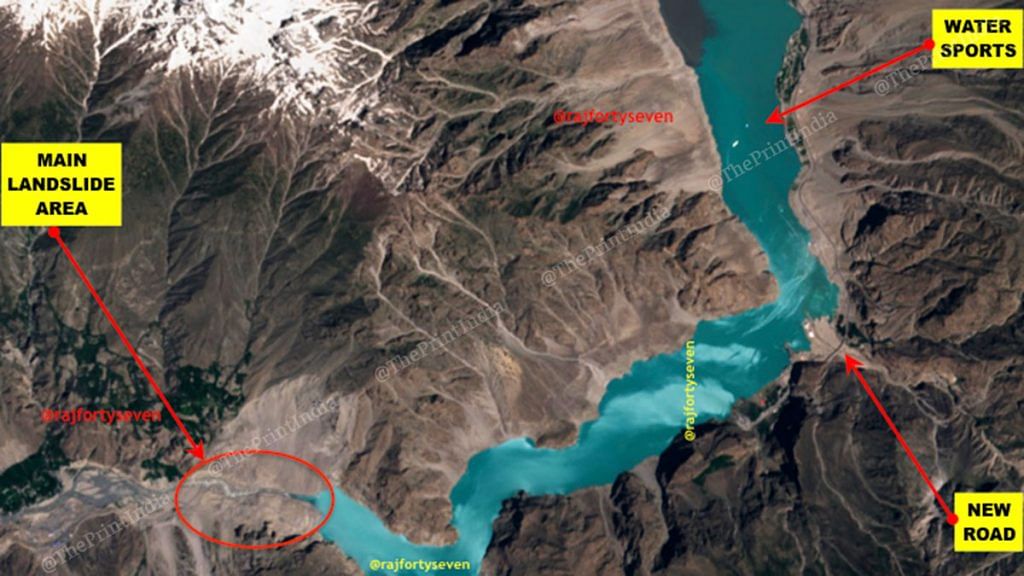New Delhi: Ever since China cut funding for the China-Pakistan Economic Corridor over corruption allegations, work on the trillion-dollar Belt and Road Initiative, President Xi Jinping’s dream project, has been progressing slowly.
India has also raised objections to the project a number of times, since the corridor passes through Pakistan-occupied Kashmir.
But now, satellite imagery shows that the CPEC has a weak link — the road through Gojal Valley in the Gilgit-Baltistan region of the Karakoram mountains. ThePrint takes a closer look at why it could be the Achilles Heel of the CPEC.
Massive landslide
On 4 January 2010, a massive landslide occurred near Attabad, blocking the Hunza river and the Karakoram Highway (KKH). The enormity of the landslide was understood only by March 2010, when almost 30 kilometres of the KKH went under water and many villages upstream were flooded.
The 142 Road Maintenance Battalion (RMB) under the Frontier Works Organisation (FWO) was pressed into service, supposedly with the help of Chinese engineers, to create a spillway through 2.5 billion cubic feet of debris damming the Hunza river.
There were indications about an impending disaster on satellite imagery as old as 2006, since the landslide at Attabad became active. The image clearly shows a dam being formed across the river with boulders from the landslide, in an almost man-made fashion.
The difficult job of clearing the landslide started in March 2010, but hardly made a dent in the 130m-200m high natural dam.
The people of Gojal got frustrated due to apathy displayed by the government of Pakistan, and started working on the spillway, losing precious lives in the process.
The damming of the Hunza river waters created a huge lake, stretching up to 30 km behind the landslide zone, beyond the town of Pasu. Residents then started using the lake to travel by boat. Today, the Hunza Lake or Attabad Lake has stabilised at 9 km from the spillway near Attabad.
The massive efforts to open the road link were unsuccessful, so Pakistan sought the help of China and the World Bank.
Five tunnels covering a total of approximately 8 km were dug, and in 2016, the KKH was finally reopened for through traffic after six-and-a-half years. The first large convoy sent on this road was a car rally from Beijing to Muscat, Oman.
The old Shishkat bridge, which had been washed away after remaining under water for four years, and a new bridge, whose piers had been completed before 2010, was finally constructed.
Status in different seasons
Although the KKH has been open for nearly three years now, traffic has to be restrained due to the tunnels en route being small in size, and not being able to take sustained two-way traffic.
In summer, images from the last couple of months show a turquoise-coloured lake with some water sports taking place on it. The road is open for traffic, indicated by vehicles observed on the road.
However, it is in the winter months, between October and March, that the road becomes a weak link for the CPEC, because it is blocked due to heavy snowfall and remains closed for traffic.
On clear days, satellite images display a frozen lake with an ice layer on the top. Those wishing to travel in and out of Gojal have to trek about 8-10 km on the lake with their loads.
The Chinese have not yet decided to invest in this area, possibly due to a combination of reasons, including pressure from India and other countries. But this weakness in the CPEC could also have factored into its hesitation.
Also read: The Chinese resort in Cambodia that can overnight be turned into a naval base
